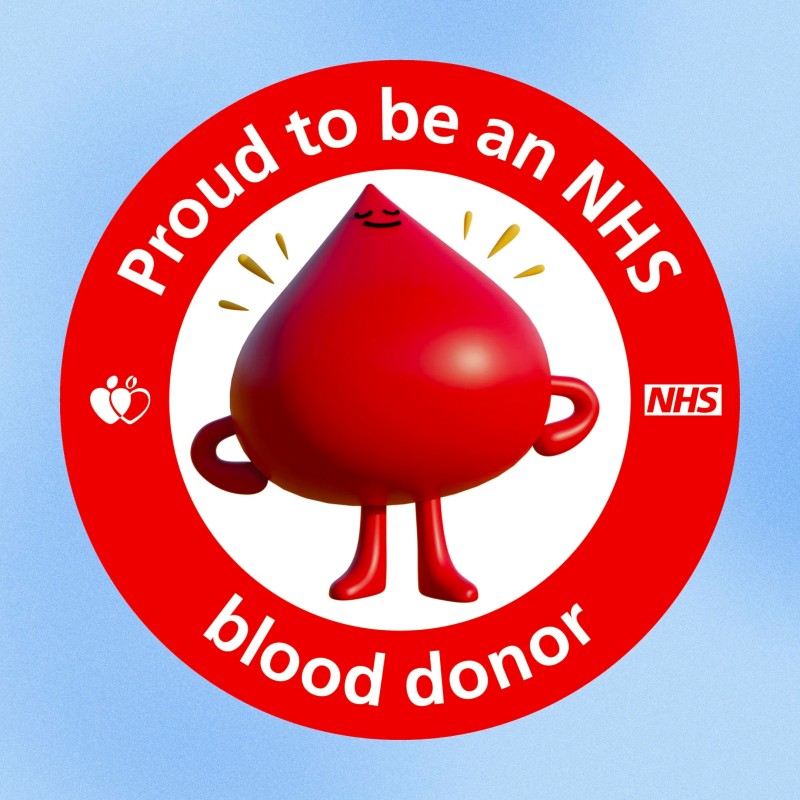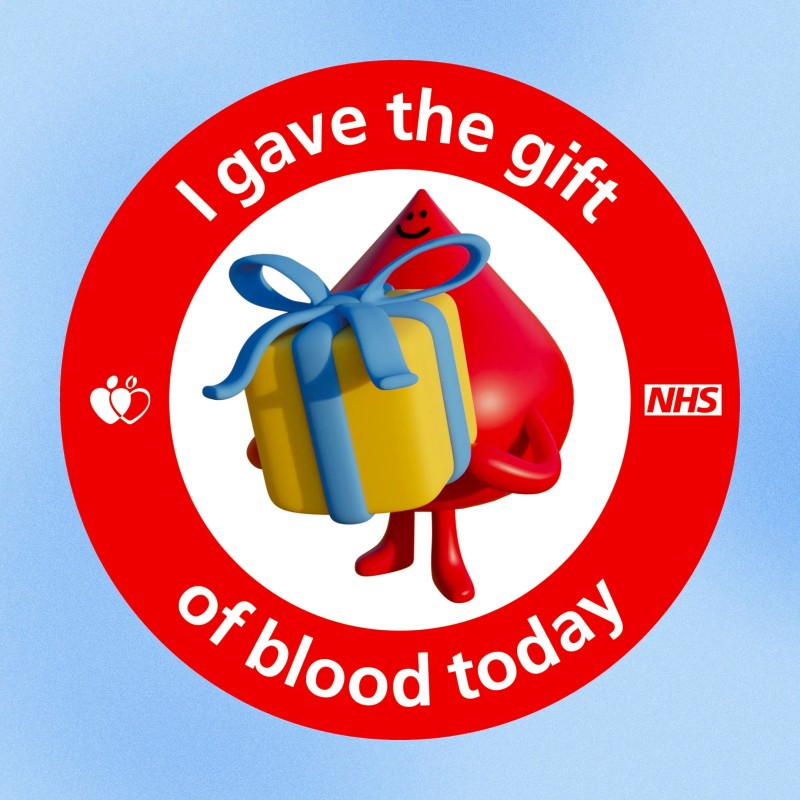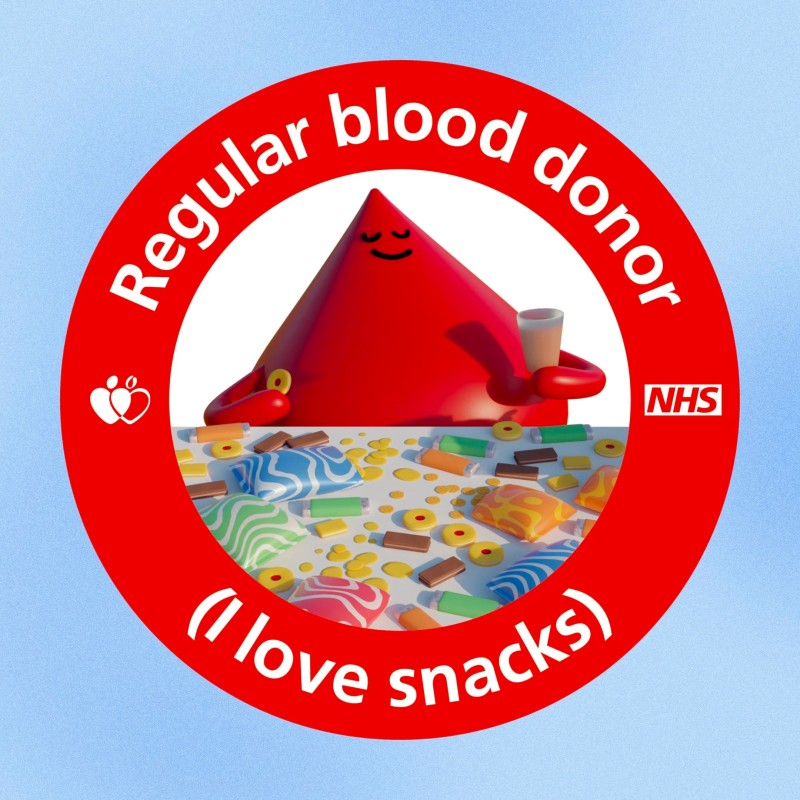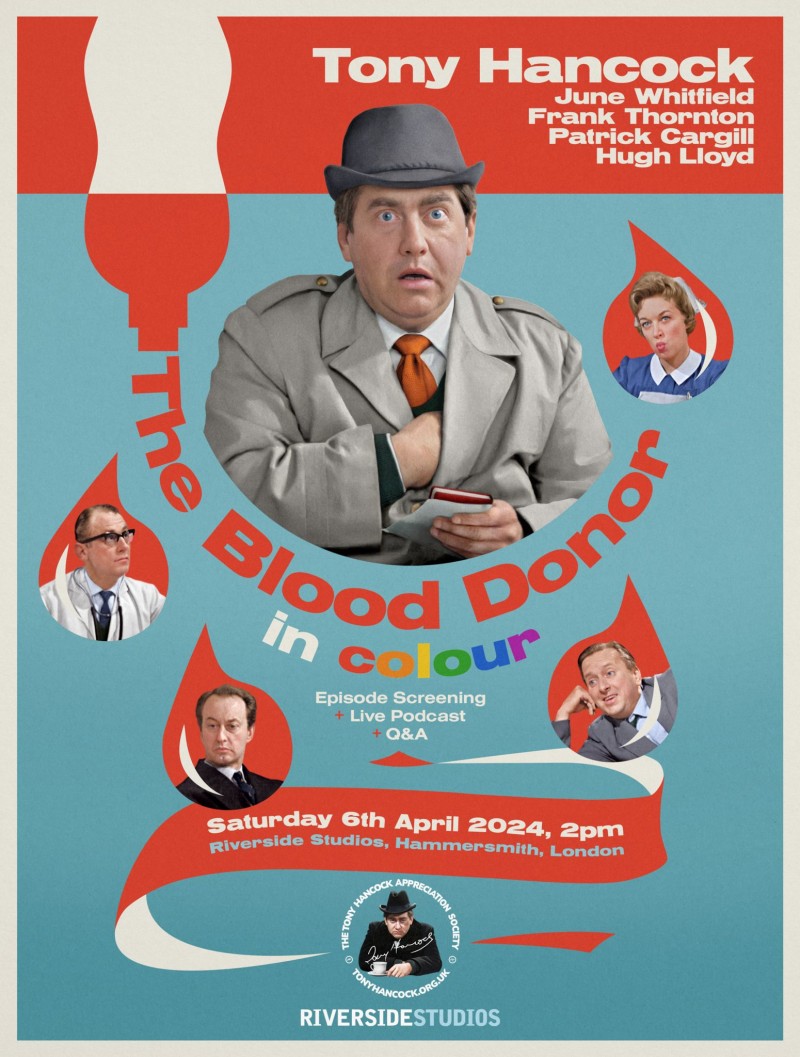How to Donate Blood, Plasma and Stem Cells

When you donate blood, the process is simple and well organised. After a brief health check and a few questions about your medical history, you’ll be asked to relax in a chair. A nurse or donor carer will find a good vein, usually in your inner elbow, clean the spot, then insert a sterile needle.
The needle connects to a blood bag, and collection starts right away. You’ll feel a gentle tug, maybe a cool sensation, but most people say it’s no worse than a pinch. Your body has about 8 to 12 pints of blood; during a session, you give around one pint (about half a litre). This is a safe amount that your body replenishes within a few days.
From donation to use:
- After collection, your pint is labelled and sent to a lab.
- The blood is tested for safety and sorted into:
- Red cells (for anaemia or surgery)
- Plasma (for burns, liver disease, or bleeding disorders)
- Platelets (for cancer treatment or severe bleeding)
- The components are stored safely and delivered to hospitals as needed.
Blood can be kept for a few weeks; red cells up to 35 days, platelets only 7 days, plasma can be frozen for a year. Quick and careful handling means your donation could be in an operating theatre or treatment room within days.
How Plasma Donation Works
Plasma donation is a bit different but just as important. Instead of giving whole blood, specialists use a method called apheresis. This means:
- Your blood is drawn, spun through a machine that separates plasma (the pale yellow liquid) from your red cells and platelets.
- The equipment then returns the rest of your blood back into your body, so you only lose plasma.
The process takes slightly longer than giving blood. Expect to be in the chair for 35 to 45 minutes. But you’ll chat, relax, or listen to music during the wait. Most donors say it’s painless and easy.
Plasma is the body’s delivery truck for nutrients, hormones, and proteins that help blood clot. Because of its special proteins, plasma helps treat:
- Accident victims and burn patients
- People with bleeding or immune disorders
- Those needing plasma-derived medicines for rare health issues
Rare Blood Types and Their Impact
There are four blood groups:
A, B, O and AB (each one has different antigens or not in the red blood cells, with various antibodies or not, in the plasma). Almost half the UK population is 0 (just as important as rare blood types, as obviously most people receiving blood are also 0 blood types, and receiving different blood is not safe, as antibodies will attack the ‘wrong cells’).
So just like you should not put diesel in a petrol car, nurses and doctors can’t give A blood to someone who is B blood and vice versa.
The RH system then breaks things down even more, regarding a protein antigen. If it’s present, it’s a positive. If it’s not, it’s a negative (that’s still good!) So everyone is basically one of 8 blood groups:
- A RhD positive (A+)
- A RhD negative (A-)
- B RhD positive (B+)
- B RhD negative (B-)
- O RhD positive (O+)
- O RhD negative (O-)
- AB RhD positive (AB+)
- AB RhD negative (AB-)
Rare types include:
- Ro sub-type: Only 2% of people (often of African, Caribbean or mixed heritage) have this blood type, used to give transfusions to patients (often babies) with sickle cell anaemia, to prevent organs shutting down). Hence why there is a real recruitment drive for black donors.
- AB-negative: Only about 1 in every 100 people has this type. It’s often needed for new-borns or cancer patients.
- Rh-null: Sometimes called “golden blood” because fewer than fifty people worldwide are reported to have it. This type can be matched with almost anyone who has rare blood.
Why rare blood matters:
- Transfusions have to be matched, or a bad reaction could happen.
- People with rare groups may wait months to find a donor.
- If you have a rare type, a single donation might save a life that would otherwise be at risk.
If you discover your blood is rare, you’ll probably be invited to join a special donor register. Staying in touch with hospital teams can make you a lifeline for others.
Eligibility and Preparation

The NHS has clear rules for donors, designed to protect both you and the patient. Most healthy adults can donate, but you’ll need to tick a few boxes:
- Age: You must be between 17 and 66 years old. If you’re a regular donor, you can offer blood or plasma up to your 70th birthday.
- Weight: You need to weigh at least 50kg (about 7 stone 12 pounds). This helps make sure the volume taken is safe for your body size.
- General health: You should feel well and free from illness at the time you donate. Coming in with a cough, cold, or fever isn’t allowed.
- Residency: You must live in the UK and be able to understand the donor forms, to ensure you know what you’re agreeing to.
For plasma specifically, repeat donors are welcome, and sometimes the age for your first plasma donation is capped a little lower. If you’re in doubt, the online NHS eligibility tool.
Who Cannot Donate
Some common situations mean you’ll need to wait to give blood or plasma, or may not be able to donate at all. Safety always comes first, for both you and the person who’ll receive your donation.
- Recent travel: Journeys to countries with malaria, Zika, or certain viruses can mean a temporary pause. The same goes for trips to places with new or rare infections.
- Medications: If you’re on antibiotics or some prescription medications, you may need to wait until the course is done or medical advice is given. Certain long-term medications can affect your ability to donate—always declare them at your appointment.
- Medical conditions: Blood disorders, heart problems, cancer, or conditions like hepatitis B or C, HIV, or past drug use usually mean you can’t donate. This helps avoid complications and infection risk.
- Recent tattoos or piercings: After tattooing, piercing, or semi-permanent makeup, you need to wait four months before donating. This avoids blood-borne viruses entering the system.
When in doubt, ask staff or use the NHS online checker. They are well trained and will help you navigate the details without stress.
Preparing for Your Appointment
Eat a light, healthy meal about two hours before giving blood or plasma. Lean into foods like wholegrain toast, bananas, or a small bowl of soup if you’re donating early in the day. Big, fatty meals are best avoided—they slow digestion and might leave you feeling queasy.
Drink plenty of water in the hours leading up to your slot, but skip the alcohol the night before. To cut down on plastic, most donation stations ask you to bring your own reusable water bottle, you can then fill that up, when you arrive.
It’s important to avoid alcohol, tea and coffee for a few days before to avoid overdoing caffeine and feeling jittery (dehydration will also risk making you faint). Also it means your blood is better for others!
After the donation you’ll be invited to have free snacks like crisps or biscuits. So if you have dietary preferences (say you’re vegan, dairy-free or gluten-free) it’s good to bring your own, so you have something to eat after your donation, where you’ll also rest for 15 to 30 minutes, before returning home. Very important also if you’re driving.
A good night’s sleep is your friend. Tired bodies are more likely to feel faint or light-headed, and being well rested keeps you relaxed.
Tips to Stay Calm and Prevent Fainting
Try steady breathing exercises just before and during the donation. Inhale deeply through your nose for four seconds, then exhale slowly through your mouth for six. Repeating this for a few cycles calms your heart rate and muscles.
During your donation, stretch your legs out and flex your feet gently every so often. This helps blood dwell in all the right places and can stop faintness in its tracks.
Staff are very well-trained (usually a combination of donor staff and qualified nurses). Someone will always keep an eye on you. If you do feel faint, they will drop the chair back so your legs go in the air, give you a salty snack and monitor you, until you feel better.
The Donation Process Step by Step

Getting started is as easy as picking up your phone. The NHS Give Blood app makes booking a slot quick and simple. Here’s how it works:
- Download the app: Search “NHS Give Blood” in the Apple App Store or Google Play Store and install it.
- Register or sign in: Use your NHS account or follow the steps to create a donor profile.
- Find donation centres: Enter your postcode, choose a location and view available dates and times.
- Book your appointment: Select a time that fits your routine. The app lets you secure a slot without long phone calls or waiting for confirmation.
- Set reminders: The app sends alerts before your appointment so you don’t forget. You can also add your donation to your phone calendar and share details with friends.
- Check your history: Track how many times you’ve donated, see your next eligibility date, and update your contact information if you move or change your number.
Screening and Safety Checks
When you arrive, staff welcome you and explain what happens next. They want you to feel relaxed and supported from start to finish. Before you donate, there are a few quick checks to keep you and any potential recipient safe:
- Questionnaire: You fill out a quick form covering your health, recent travel, prescribed medicines, and lifestyle. This helps staff spot anything that could cause problems for you or the patient.
- Temperature check: Staff will take your temperature with an electronic forehead or ear thermometer. Drawing blood is safe only if you’re well.
- Finger-prick test: The team takes a tiny drop of blood from your finger to check your haemoglobin (iron) levels. This test is nearly painless, like a light tickle, and only takes a moment.
If all results are within range and you’re still feeling good, you are ready to donate. It’s important to follow a balanced diet (with optional multi-supplement) to ensure your iron and other nutrients are within range, so your blood is not rejected on arrival.
The Actual Donation

When it’s time, you will be shown to a comfy chair with an armrest. The team talks you through what’s about to happen, making it as stress-free as possible. Here’s what you can expect during donation:
- Your chosen arm is cleaned with a wipe to prevent germs.
- A nurse or donor carer inserts a single-use sterile needle. Most people describe the sensation as a pinch or sting that fades quickly.
- For blood donation, about a pint is drawn and collected in a special bag, taking roughly 5-10 minutes.
- For plasma, the process lasts a bit longer (usually up to 45 minutes), as your blood goes through a machine that separates plasma before returning the rest to you.
What does it feel like? You may notice a slight pressure or gentle pulling inside your arm, but not pain. You can chat, listen to music, or simply lie back and close your eyes. Staff keep an eye on you and regularly check you’re still okay.
I don’t mind giving a reasonable amount, but a pint? Why, that’s very nearly an armful! The Blood Donor, Hancock’s Half Hour (1961)
Post-Donation Care and Recovery
After donation, you deserve a moment to rest and recharge. The team invites you to a refreshment area for a well-earned break. Here’s how to look after yourself right after giving blood or plasma:
- Relax: Take a seat for at least 10-15 minutes and enjoy a snack. Biscuits, crisps, and juice or water help restore your energy.
- Drink fluids: Keep sipping water over the next few hours. Staying hydrated supports your body as it makes new blood or plasma.
- Small movement: Before you stand up and head out, flex your legs and wiggle your toes. This brings your blood pressure back up and reduces the chance you’ll feel light-headed.
- Signs to watch for: While most people walk off feeling fine, keep an eye out for dizziness, unusual tiredness, or bruising at the site. Very rarely, some get mild nausea or faint; let staff know if you ever feel unwell.
When you get home, avoid heavy lifting or intense activity just for the rest of the day. Most donors go back to daily life quickly, but treating your body kindly after a donation supports quick recovery.
A couple of weeks after your donation, you even receive an email, telling you (not the person for confidentiality) where your blood has gone, and how it was used.
Plasma, Stem Cells, and Bone Marrow
Donating plasma feels a lot like giving blood, but there are a few extra steps. Expect to spend around 35 to 45 minutes in the chair. The key difference is the equipment: instead of just collecting your blood, staff use a special machine called an apheresis machine.
This device draws your blood, separates out the plasma, and safely returns your red cells and platelets straight back into your body. Not so many places across England have donation stations, so donors are needed.
What does plasma actually do? Think of it as the liquid part that carries everything else in your blood around your body. It contains proteins, nutrients, and clotting agents. Hospitals rely on donated plasma to treat:
- Serious burns, where patients need extra fluid and healing proteins
- Clotting disorders, like haemophilia, that require plasma-based medicine
- Immune deficiencies and liver diseases
Joining the Stem Cell Register
While some people donate blood or plasma, others go a step further by joining the stem cell (bone marrow) register. All it takes to start is a simple cheek swab. At many recruitment drives or through the post, you can swab the inside of your cheek and return the sample in a small kit. There’s no pain and no fuss.
Once your cheek swab is collected, the team will check your tissues (not just your blood type) and add you to the UK stem cell registry. If one day a patient with blood cancer or another blood disorder matches you, you could be invited to donate. The process could save someone’s life if their family or the global register can’t provide a match.
Matches are special because they rely on rare tissue types that often run in families or certain backgrounds. You might wait years, or never be called. But by being on the list, you give hope to kids and adults with no other option.
Bone Marrow Donation Overview
If you’re matched through the stem cell registry, staff may ask you to donate your bone marrow or stem cells. The donation comes in two main ways:
- Peripheral blood stem cell collection: You take a course of injections for a few days to boost the number of stem cells in your blood, then donate through a process similar to plasma donation. You sit in a chair, the machine draws your blood, collects stem cells, and returns everything else.
- Surgical bone marrow harvest: A minor procedure under general anaesthetic, where doctors collect marrow from your hip bone using a needle. Most donors report some soreness afterwards, but no lasting pain.
Helping Sickle Cell Patients
People living with sickle cell disease often need blood and plasma transfusions, sometimes as a regular treatment for years. These patients have red blood cells that become misshapen, causing pain, anaemia, and even organ damage if left untreated.
The most effective transfusions usually come from donors with a similar ethnic background, especially people of Black African or Caribbean heritage. Matching blood is important to avoid reactions and to make transfusions as safe as possible. Regular plasma donations also help manage complications.






